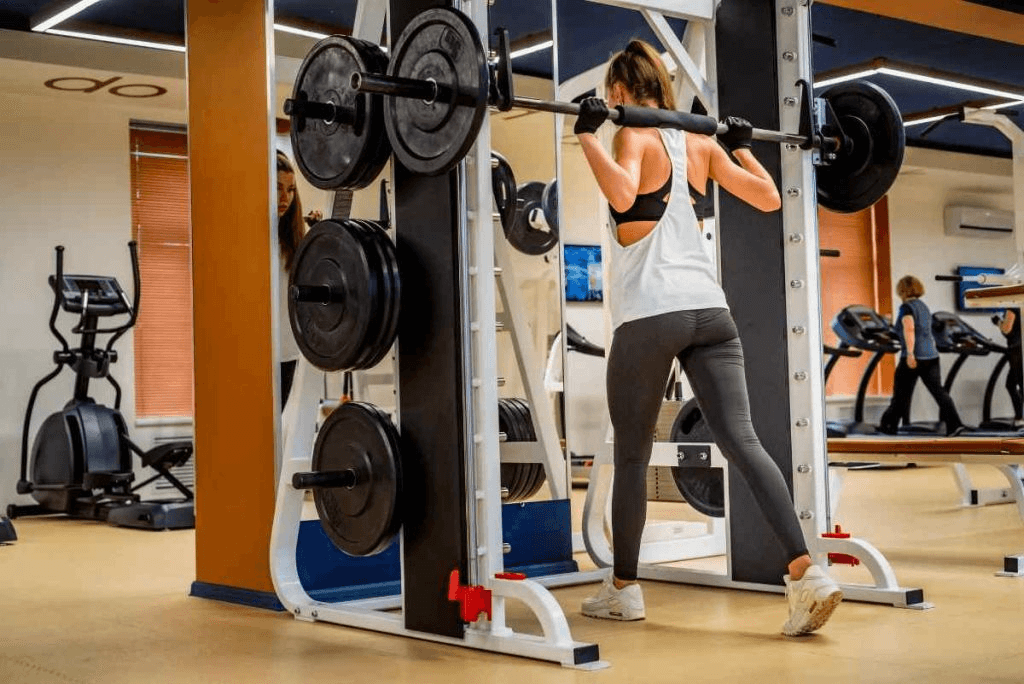The leg press machine is a foundational tool for lower body training. But one factor often overlooked by beginners and even intermediate lifters is foot placement—a small adjustment that can dramatically impact which muscles are targeted, the safety of the movement, and the effectiveness of your workout.
This guide breaks down the stances and leg positioning on the leg press so you can tailor your technique to your goals—whether that’s growing your quads, strengthening your glutes, or protecting your knees.
Why Foot Placement on the Leg Press Matters
The placement of your feet on the leg press machine changes the angle and recruitment of your lower body muscles. Shifting your foot position just a few inches higher or wider can emphasize different muscle groups, alter your range of motion (ROM), and reduce stress on your joints.
The 5 Main Leg Press Foot Positions
Let’s examine the most effective leg press foot positions and the specific benefits of each:
1. High Foot Placement
-
Muscles targeted: Glutes, hamstrings
-
Why use it: A higher position reduces knee flexion and increases hip extension, putting more load on the posterior chain.
-
Best for: Building stronger glutes and hamstrings or reducing knee strain.
2. Low Foot Placement
-
Muscles targeted: Quadriceps
-
Why use it: This increases knee flexion, making your quads work harder during each rep.
-
Caution: Avoid if you have sensitive knees, as it places more pressure on the joint.
-
Best for: Quad hypertrophy and definition.
3. Wide Foot Placement
-
Muscles targeted: Inner thighs (adductors), glutes
-
Why use it: A wider stance flares your hips and allows more external rotation, activating the inner thigh muscles.
-
Best for: Strengthening the inner thighs and building a more rounded lower body.
4. Narrow Foot Placement
-
Muscles targeted: Outer quads
-
Why use it: A narrow stance keeps the legs close, increasing tension on the outer thigh.
-
Best for: Sculpting the outer quads and improving symmetry.
5. Standard Shoulder-Width Placement
-
Muscles targeted: Balanced lower body development
-
Why use it: A neutral stance is a great starting point for most lifters. It offers a safe, natural movement pattern that evenly targets all major leg muscles.
-
Best for: General strength, beginners, or maintenance workouts.
Tips for Safe and Effective Leg Positioning
Regardless of your chosen leg press foot position, follow these guidelines to maximize effectiveness and minimize risk:
-
Keep your knees aligned: Knees should track in line with your toes to avoid joint stress.
-
Don't let your lower back round: Maintain contact between your back and the pad to protect your spine.
-
Control the descent: Never let the weight free-fall; controlled reps are safer and more productive.
-
Adjust based on your goals: Your foot stance should reflect your muscle-building priorities and mobility level.
Common Mistakes with Leg Press Foot Position
-
Placing feet too low: Can cause knees to move past the toes and stress the patellar tendon.
-
Locking out the knees: Avoid full knee extension at the top to prevent joint hyperextension.
-
Going too deep with improper form: Range of motion is important, but not at the cost of spinal rounding or knee misalignment.
Final Thoughts
The leg press is more than just pushing weight with your legs—it’s a customizable lower-body tool that responds to your stance, form, and focus. By understanding leg positioning on the leg press and how different stances affect muscle recruitment, you can train smarter and safer.
Whether your goal is strength, size, or injury prevention, small changes in foot placement on the leg press machine can make a major difference in your results.











































Leave a comment
This site is protected by hCaptcha and the hCaptcha Privacy Policy and Terms of Service apply.